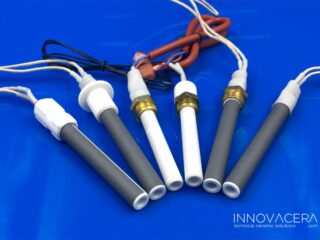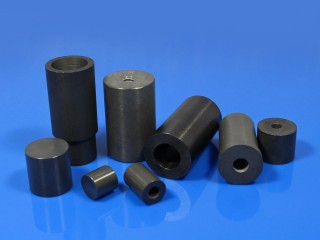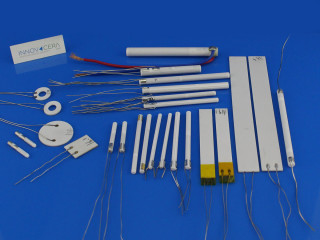Silicon nitride (Si3N4) ceramic igniters have significant advantages over ceramic heaters, mainly reflected in their high temperature resistance, rapid heating ability and thermal stability, making them very popular in many high temperature application scenarios. Today, we will mainly introduce the characteristics, common application scenarios, advantages and precautions of silicon nitride igniters.
![]()
1. Core characteristics
1) High temperature tolerance
2) Silicon nitride ceramic igniters can heat up to 1000-1400°C in a very short time (2-10 seconds), and can work stably in a high temperature environment of 1200-1400°C for a long time. This feature makes it suitable for scenarios that require rapid start-up and maintenance of high temperature uniform distribution, such as industrial kilns, burners, mold heating, etc.
3) Thermal surface stability
4) The heating element is encapsulated in a dense silicon nitride ceramic matrix using tungsten wire embedding or screen printing technology to form a wide thermal surface that can evenly transfer heat. For example, in mold heating or 3D glass molding, the thermal surface can achieve local or overall uniform temperature distribution.
5) Thermal shock and oxidation resistance
6) Silicon nitride ceramics have excellent thermal shock stability and can withstand rapid hot and cold cycles. The oxide protective film formed on the surface can prevent high-temperature oxidation and extend the service life. This is crucial for heat distributors that require frequent start-stop or temperature fluctuations.
The performance data is as follows:
![]()
1. Specific application scenarios
1).Industrial kilns and burners
2).Silicon nitride igniters are widely used in gas furnaces, kilns and other equipment to ensure uniform temperature distribution in the combustion chamber through rapid ignition and stable hot surfaces. For example, FKK’s products can be directly used in gas burners with a temperature range of 1100-1400°C.
3).Mold heating system
4).In processes such as 3D glass molding and lens manufacturing, silicon nitride igniters heat the mold at local high temperatures, combined with their heat conduction characteristics to achieve precise temperature control, avoiding deformation or defects caused by uneven heat distribution.
5).Thermal management of gas equipment
6).Such as gas stoves, ovens, water heaters, etc., the high-temperature surface of the igniter directly contacts the combustible gas, and rapid ignition is achieved through heat conduction. At the same time, its wide heat surface design can optimize combustion efficiency and reduce local overheating or cold areas.
7).New energy and environmental protection equipment
8).In solid oxide fuel cells (SOFCs), silicon nitride igniters are used for temperature control in the preheating and startup stages; in biomass boilers and exhaust gas treatment systems, its rapid heating ability can improve heat distribution efficiency and reduce pollutant emissions.
![]()
3.Technical advantages and design points
1).Power and voltage flexibility
2).The product covers a power range of 10W to 1000W, supports voltages of 4V to 240V, and can customize the shape of the heating circuit and power density according to the needs of heat distribution. For example, INNOVACERA’s DG series (220-230V, 400-1000W) is suitable for distributed heating of large boilers.
3).Structural optimization
Packaging design: High-purity alumina ceramic base and metal bushing are used to ensure electrical insulation and mechanical strength.
Heat dissipation protection: Set up a temperature buffer and an insulating package to prevent overheating of the terminal (the temperature of the package end needs to be <400°C).
4).Environmental adaptability
5).No electromagnetic interference, oil resistance, moisture resistance and other characteristics make it suitable for complex industrial environments, such as high temperature and corrosive medium heating in the petrochemical industry.
4. Precautions for use
1).Installation and airflow design
-The gas flow rate needs to be matched according to the model to avoid local overheating due to too low flow rate (surface temperature ≤1200°C).
-The airflow channel should ensure full contact with the igniter and reserve heat dissipation space.
2).Operation restrictions
-Strictly prohibit sudden cooling and heating or liquid splashing to prevent ceramic cracking.
-After successful ignition, the power must be turned off in time to avoid continuous high temperature damage to the components.
To summary, Silicon nitride ceramic igniters have become key components in heat distributor applications due to their high temperature performance, thermal stability and flexible design, especially in industrial scenarios that require fast response and uniform heating. In the future, with the advancement of material technology (such as the development of silicon nitride and molybdenum disilicide composite materials), their application range will be further expanded to more stringent thermal management fields.
For more informaiton, please consult with sales@innovacera.com




 Enquiry
Enquiry